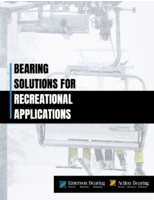Johnson Matthey's SCRT® Technology, a Combination SCR and Continuously Regenerating Diesel Particulate Filter, Has Been Proven on Trucks and Automobiles and Is Now Gaining Acceptance on Stationary Engines
The leader in stationary diesel engine emissions control was the first to patent the technology in the 1980s
Audubon, PA – Johnson Matthey's four-way SCRT® (Selective Continuously Regenerating Technology) system is considered the best available option to reduce NOx, PM, CO and VOC from diesel engines to meet Tier 4 emission standards.
Johnson Matthey was the first to develop and patent CRT® technology which uses a catalyst to regenerate the diesel particulate filter (DPF), which traps the PM in diesel exhaust. The CRT system has been installed on millions of heavy-duty diesel trucks and light-duty diesel vehicles worldwide. Selective Catalytic Reduction (SCR) technology is well known for being the best available control technology (BACT) for reducing NOx in diesel exhaust. Johnson Matthey combined SCR with the CRT technology to create the SCRT system, and today, millions of SCRT systems have been installed on trucks and automobiles.
Johnson Matthey Stationary Emissions Control group supplies SCR systems and CRT DPF systems for prime and emergency diesel generators. By combining these two technologies, Johnson Matthey's SCRT system delivers the highest NOx, PM, CO and VOC reduction available today to achieve a Tier 4 solution.
Unlike other emissions control packages incorporating similar concepts, Johnson Matthey—a world leader in catalyst manufacturing—develops and manufactures its own catalysts, which gives each customer the unique combination of technologies that work best for their system.
The SCRT system comprises a urea-based SCR system plus a CRT DPF system. The engine exhaust first flows through the CRT DPF, to reduce PM. CO and a controlled amount of urea is then injected into the exhaust before it enters the SCR catalyst modules.
The urea is converted to ammonia and provides the chemical agent to reduce the NOx across the SCR catalyst. The CRT system incorporates an active oxidation catalyst plus particulate filter and the urea SCR system includes a urea injection module, SCR catalytic converter and electronic controls.
About Johnson Matthey:
Traded on the London Stock Exchange (symbol: JMAT), Johnson Matthey is a specialty chemicals company focused on its core skills in catalysts, precious metals, fine chemicals and process technologies. The $19 billion company employs around 10,000 people in over 30 countries.
About Johnson Matthey Stationary Emissions Control (SEC):
Johnson Matthey SEC is well known for its total systems approach to solving customer's emissions problems, as well as a reputation for strong customer support at the field service level. SEC designs and supplies catalysts and engineers catalytic systems to control emissions of nitrogen oxides (NOx), carbon monoxide (CO), hydrocarbons (HC), volatile organic compounds (VOC), hazardous air pollutants (HAPs) and particulate matter (PM). SEC is dedicated to the research, development and application of catalyst technology to improve quality of life by reducing air emissions.
Contact Information:
For more information about Johnson Matthey's Stationary Emissions Control (SEC):
Please contact:
Wilson Chu
Business Development Manager
Johnson Matthey
900 Forge Avenue
Suite 100
Audubon, PA 19403-2305
Tel: 484-320-2119
Fax: 484-320-2152
E-mail: chuw@jmusa.com
Website: www.jmsec.com
For Media:
Please contact:
Allen Solovitz
Tel: 609-823-1247
E-mail: perceptmkt@comcast.net




